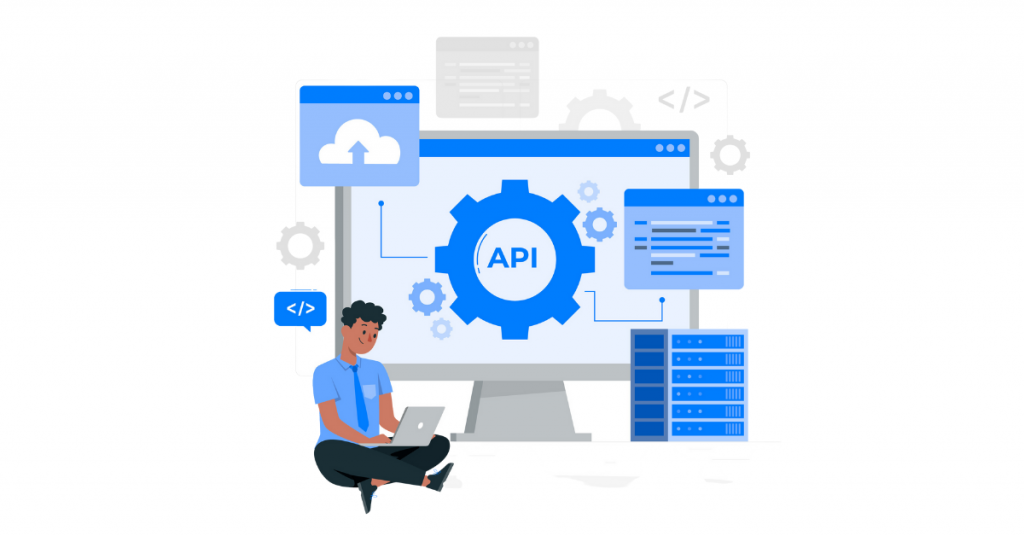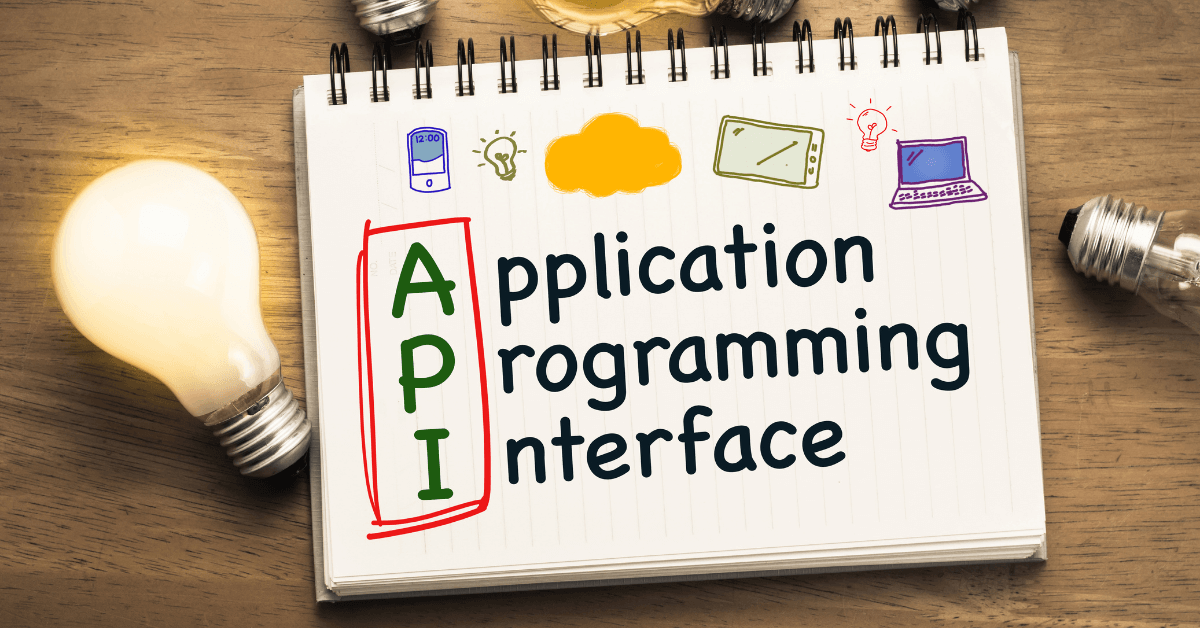In today’s interconnected world, Application Programming Interfaces (APIs) play a crucial role in enabling communication and data exchange between different software systems. API design and implementation are fundamental aspects of developing robust and efficient software solutions. The quality of API design and implementation directly impacts the performance, scalability, and security of IT services.
This blog aims to explore the best practices for API design and implementation, ensuring high-quality performance and delivering optimal results for businesses.
According to recent statistics, APIs continue to dominate the technology landscape. The number of public APIs has grown exponentially, approximately 70% of respondents expected to use more API in 2023 than the last year with estimates reaching over 50,000 APIs available in 2023.
Moreover, the global API management market is expected to reach $6.29 billion by 2024, witnessing a compound annual growth rate (CAGR) of 28.4%
These numbers clearly indicate the increasing significance of APIs in the IT industry and the need for well-designed and performant API solutions.
What is API Design and Implementation?
API design refers to the process of defining the structure, functionality, and behavior of an API. It involves making decisions about resource naming, request/response formats, data models, error handling mechanisms, and other crucial aspects that determine how developers interact with the API. API implementation, on the other hand, involves the actual coding and development of the API based on the design specifications. It includes choosing the right tools, frameworks, and technologies to implement the desired functionality and ensuring that the API performs optimally.
Why is High-Quality Performance Essential in API Design and Implementation?
High-quality performance API is essential in API design and implementation due to several key reasons:
- User Experience: APIs are used by developers who rely on them to deliver fast and reliable responses. A well-performing API enhances the user experience by providing quick and consistent results.
- Scalability: APIs need to handle varying levels of traffic and usage demands. High-quality performance ensures that an API can scale effectively to accommodate increased usage without experiencing performance degradation.
- Efficiency: APIs that perform optimally use resources efficiently, including server processing power, memory, and network bandwidth. By minimizing resource consumption, high-quality performance enables cost savings and improved efficiency for both the API provider and consumers.
- Reliability and Availability: High-quality performance contributes to the reliability and availability of an API. Reliability is essential for API consumers who rely on the API for critical functionality.
- Competitive Advantage: In today’s competitive landscape, businesses strive to differentiate themselves from competitors. High-quality API performance can provide a competitive advantage by attracting more developers and consumers. Developers prefer APIs that offer excellent performance, ease of use, and reliability.
- Business Reputation: APIs reflect the quality and professionalism of a business. An API with high-quality performance establishes a positive reputation for the business, indicating its commitment to delivering reliable and efficient services.
How to Ensure High-Quality Performance in API Design and Implementation?

To ensure high-quality performance in API design and implementation, the following best practices should be followed:
Best Practices for API Design
Below are a few API design best practices that you can implement to get the best results:
- Use a standard API design methodology: Adopting a consistent and well-defined API design methodology, such as RESTful or GraphQL, helps create APIs that are intuitive, scalable, and interoperable.
- Use a consistent API style: Consistency in API design makes it easier for developers to understand and work with multiple APIs from the same organization. It includes consistent naming conventions, error-handling approaches, and data formats.
- Use a well-defined data model: A well-defined data model ensures consistency in the structure and format of data exchanged through the API. It helps in reducing ambiguity and simplifying data processing for developers.
- Use a robust error handling mechanism: Effective error handling is crucial for API consumers to understand and troubleshoot issues. Define clear error codes, messages, and provide appropriate guidance for error resolution.
- Use caching to improve performance: Caching frequently accessed data or responses can significantly improve API performance by reducing the need to retrieve data from the original source repeatedly. Caching mechanisms like Redis or Memcached can be employed to store and serve cached data efficiently.
- Use load balancing to improve scalability: Implementing load balancing mechanisms distributes incoming API requests across multiple servers, ensuring optimal resource utilization and improved scalability. Load balancers such as Nginx or HAProxy can be used to achieve this.
Best Practices for API Implementation
- Use the right tools and technologies: Choose suitable programming languages, frameworks, and libraries that align with the requirements of your API. Consider factors like performance, scalability, security, and community support when making technology decisions.
- Perform load testing: Conduct thorough load performance testing to simulate real-world usage scenarios and identify potential performance bottlenecks. Load testing tools like Apache JMeter or Gatling can help simulate high loads and measure API response times and throughput.
- Monitor API performance: Implement comprehensive monitoring solutions to track API performance metrics such as response time, error rates, and usage patterns. Tools like Prometheus or Datadog can be used to collect and analyze performance data.
- Ensure proper API versioning: Implement versioning mechanisms to manage changes in the API without breaking backward compatibility. This allows developers to adopt new features and improvements gradually while ensuring existing integrations remain functional.
- Implement effective security measures: API security is of paramount importance. Implement authentication and authorization mechanisms, such as OAuth or API keys, to control access to your API and protect sensitive data.
Which Tools and Technologies are Crucial for API Design and Implementation?
Several tools and technologies can aid in API design and implementation:
- API Design Tools: Tools like Swagger or RAML provide a visual interface for designing, documenting, and testing APIs. They allow developers to create interactive API documentation, define endpoints, and generate code snippets.
- API Gateways: API gateways, such as Kong or Apigee, act as intermediaries between clients and APIs. They provide functionalities like request routing, rate limiting, caching, and authentication/authorization, thereby improving security and performance.
- Containerization and Orchestration: Technologies like Docker and Kubernetes enable the creation and management of containerized applications. They help in packaging APIs and their dependencies into lightweight, portable containers and ensure scalability and fault tolerance.
- Performance Monitoring Tools: Tools like New Relic or Dynatrace offer comprehensive monitoring capabilities for APIs. They provide real-time insights into API performance, detect anomalies, and facilitate proactive troubleshooting.
Also Read: Top App Development Frameworks for Developing High-Quality Mobile Apps
What are the Common Challenges in API Design and Implementation and How Do Overcome Them?
API design and implementation present various challenges that can impact performance. Here are some common challenges and their solutions:
- Poorly Defined Object Models: Inadequate definitions of object models can lead to inconsistencies and confusion. To overcome this, invest time in designing a clear and comprehensive data model, leveraging standardized schema definitions like JSON Schema.
- Overloading API Endpoints: Combining too many functionalities into a single API endpoint can result in excessive complexity and degraded performance. Avoid overloading and design APIs with a single responsibility principle in mind.
- Inadequate Error Handling: Unclear or inconsistent error handling can hinder developer productivity and impact user experience. Define a consistent and well-documented error-handling mechanism that provides meaningful error messages and guidance for resolution.
- Insufficient Performance Testing: Neglecting performance testing can result in unexpected bottlenecks and poor scalability. Perform rigorous load testing with realistic workloads to identify performance limitations and optimize API performance accordingly.
- Lack of Versioning Strategy: Inadequate versioning can lead to breaking changes and compatibility issues. Implement versioning mechanisms early in the API lifecycle to ensure smooth transitions and allow for incremental improvements.
- How Can API Design and Implementation Impact Your Business?
API design and implementation can have a profound impact on business outcomes. Here’s how:
- Developer Experience: Well-designed APIs with clear documentation and intuitive interfaces enhance the developer experience, making it easier for developers to integrate and use their APIs. This improves developer satisfaction and encourages more developers to adopt your APIs, leading to increased innovation and a larger developer community.
- Time-to-Market: Efficient API design and implementation enable faster development and integration of software systems. By providing well-defined APIs that are easy to understand and use, businesses can accelerate the development process and bring products and services to market more quickly.
- Business Partnerships and Integration: APIs facilitate seamless integration between different systems and platforms. By offering high-quality APIs, businesses can attract potential partners and foster collaborations, leading to expanded market reach and new business opportunities.
- Customer Satisfaction: APIs are the backbone of many modern applications and services. When APIs perform well, the overall user experience improves, resulting in higher customer satisfaction. Satisfied customers are more likely to become repeat customers and advocates for your products or services.
- Revenue Generation: APIs can be monetized directly or indirectly. Businesses can offer premium API access, charge for usage, or use APIs to drive traffic and engagement to their core products or services. Well-designed and high-performing APIs attract more users and increase the potential for revenue generation.
Related Blog: API Development: The Complete Guide for Building APIs
Conclusion
API design and implementation are critical components of building robust, scalable, and high-performing software systems. By following best practices for API design and implementation, businesses can ensure high-quality performance, enhance user experiences, and gain a competitive edge. Moreover, leveraging the right tools, technologies, and methodologies, along with thorough testing and monitoring, is key to achieving optimal API performance. As APIs continue to shape the digital landscape, investing in well-designed and performant APIs becomes increasingly important for organizations looking to thrive in the connected world.
Ensure your APIs deliver high-quality performance with our API Integration Services. We offer comprehensive API Design and Implementation Services, including API Performance Optimization Solutions and API Security and Authentication Services. Contact us today to elevate your API performance and drive business success.
Ensure high-quality performance for your APIs
Our team of experts can help you identify and address performance bottlenecks in your APIs. We can also help you optimize your APIs for performance, scalability, and security.
Frequently Asked Questions
Q1: What is the importance of APIs in an IT company?
APIs enable seamless communication and data exchange between different software systems, allowing IT companies to integrate and leverage existing services, accelerate development, and create innovative solutions. APIs are essential for building scalable and interconnected applications and driving business growth.
Q2: What is the difference between API design and API implementation?
API design refers to defining the structure, behavior, and functionality of an API, including resource naming, data models, and error-handling mechanisms. Furthermore, API implementation involves the actual coding and development of the API based on the design specifications, choosing the right tools and technologies, and ensuring the API performs optimally.
Q3: How does API design and implementation affect the performance of IT services?
API design and implementation directly impact the performance of IT services. Well-designed APIs with efficient data models, error-handling mechanisms, and caching strategies contribute to faster response times, scalability, and improved efficiency. In contrast, poor API design and implementation can result in slower response times, scalability limitations, and increased resource consumption.
Q4: What are the most important factors to consider when designing an API?
When designing an API, it is crucial to consider factors such as ease of use, scalability, consistency, security, and interoperability. Moreover, using a standardized API design methodology, maintaining a well-defined data model, and implementing robust error-handling mechanisms are key considerations for API design.
Q5: How do I choose the right API design methodology?
Choosing the right API design methodology depends on your specific requirements and the nature of your application. RESTful and GraphQL are popular methodologies, each with its strengths. RESTful APIs are widely adopted for their simplicity and scalability, while GraphQL offers more flexibility and efficiency in data fetching. Evaluate your project needs and consult industry best practices to make an informed decision on the most suitable API design methodology.
Also Read:


























